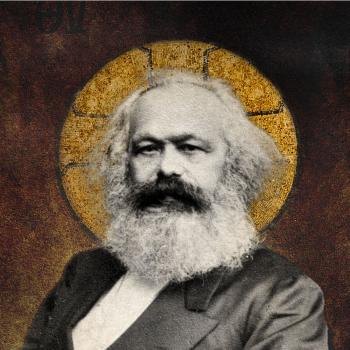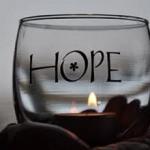Pictures of Hope from the Holy Land
A post from the trip-blog, Ancient Stones, Living Stones at Patheos.
By Frank Rogers
 After a day and a half exploring the breathtaking Galilean seaside where Jesus taught and healed, we followed his lead and returned to Jerusalem, with its current political crisis. Within the despairingly complicated quagmire of issues, we encountered several pictures of hope. Sabeel is a center in East Jerusalem promoting Palestinian liberation theology rooted in nonviolence and an empowered justice for the people. One of its founding directors, Cedar Duaybis, shared her story with us. A feisty and impassioned woman, who in another time would be enjoying grandchildren in retirement, Cedar explained the passion that keeps her mobilizing young people in Palestinian neighborhoods and travelling to any place that will listen to the cry of her people.
After a day and a half exploring the breathtaking Galilean seaside where Jesus taught and healed, we followed his lead and returned to Jerusalem, with its current political crisis. Within the despairingly complicated quagmire of issues, we encountered several pictures of hope. Sabeel is a center in East Jerusalem promoting Palestinian liberation theology rooted in nonviolence and an empowered justice for the people. One of its founding directors, Cedar Duaybis, shared her story with us. A feisty and impassioned woman, who in another time would be enjoying grandchildren in retirement, Cedar explained the passion that keeps her mobilizing young people in Palestinian neighborhoods and travelling to any place that will listen to the cry of her people.
Cedar was born in the seaside town of Haifa, raised Episcopalian, and schooled by British missionaries. Her mother, though Palestinian, was as British as the queen. She only prayed in English, only sang hymns from the Book of Common Prayer, and knew every birthday in the royal family. In 1948, the British were driven from the land and the empire vacated. Cedar, with only her mother and father from her family, fled to Nazareth where they lived in a refugee camp under military rule for over 15 years. She is still unable to visit the house and church her parents and grandparents helped build. They lost their possessions, Cedar shared, but more they lost their faith. British religious education insisted that Israel was their ancestor and spiritual ally living under the promise of freedom from slavery. Suddenly, Jewish Zionists invaded their land refusing to mingle with the people living there and building a life together. Israel became their Pharaoh—enacting racist laws, confiscating their land, and harassing them to pressure an involuntary exodus from the region. Now huge barriers are obstacles for a peaceful resolution—the status of the 4 million refugees still living in Lebanon, Syria, Jordan, and Egypt; Jewish settlements that dig intractable roots in land apportioned to the Palestinians; how to share Jerusalem between Muslims, Jews, and Christians all of whom find the city sacred; where to draw the borders when various treaties have drawn them differently throughout the conflict; and the difficulty of finding Palestinian unity when the people are fragmented throughout Israel, the West Bank, East Jerusalem, Gaza and surrounding Arab countries. Cedar reads the Bible through Palestinian eyes now—not through the eyes of imperialism be it British or otherwise. These eyes see hope in Palestinian communities fighting for a ‘minimal measure of justice and a willingness to forgive the rest.
Afterwards, our co-leader Janet Wright, shared with us the work of Palestinian therapists working through the YMCA in Bethlehem. These therapists recognized that—with all of the violence, harassment, and threat of loved ones disappearing—the children were suffering from the aftereffects of trauma. Traditionally, many Palestinians interpreted disabilities and mental illness in children as a curse destined by God with no hope of remedy. Witnessing the effects of violence—where children developed the symptoms of Post Traumatic Stress Syndrome—the people realized that illness is not ordained by God, but is preventable and, more so, treatable. The therapists began a campaign educating parents about the symptoms of PTSD to watch for in their children and offering healing workshops in schools and community centers. At one such week-long workshop, a young girl attended whose trauma was so disturbing she remained mute and withdrawn. She and her mother had walked to the front door or their home to answer a bell that had rung. Israeli soldiers were outside. While the mother fumbled with the locks, one soldier shot through the door hitting the mother. After breaking through the door, the soldiers refused to call for medical assistance. One hour later, the mother had bled to death.
On the first day of the workshop, the children were invited to draw their worst memory. The young girl drew the scene inside the front door of her home. The picture was so moving, the leader asked her if she could photograph the picture and the girl along with it. The girl mutely declined. For the next several days, the therapists worked with the girl through art and play therapy in addition to EMDR—an acclaimed therapeutic technique proving to be enormously successful for short-term treatment of acute trauma. On the third day, the father brought the girl to the workshop and pulled Janet aside. “I don’t know what you have been doing with her,” he said, “but last night for the first time since her mother’s death my daughter played and braided her sister’s hair.” At the end of the week, the girl was talking with the others. Her final picture was of her mother—in heaven reunited with her daughter.
Finally, we visited Rawdat El-Zahur, a Palestinian elementary school in East Jerusalem. Translated ‘A Garden of Flowers,’ the school teaches impoverished Christian and Muslim children from nursery school through the sixth grade. Salwa, the principal, explained the history and philosophy of the school as we toured the classrooms. In 1952, Elizabeth Nasser gathered children begging on the streets and founded a school for those who could not afford any other education. The curriculum is dedicated to nurturing peace, empowerment, and reconciliation through character development—highlighting the values of forgiveness, compassion, justice, patience, and commitment—using art, communal problem-solving, and active education. When the children experience conflict—either internally or interpersonally—they are encouraged to draw their experiences, then sing and dance their healing. The first graders made us smile as they demonstrated, beaming while performing a communal Arab folk dance. Though the first graders made us smile, the sixth graders made us cry. Crowded into a tiny classroom, the 20 twelve year-olds—Christian and Muslim, boy and girl—sang for us their hope. It was a song we recognized.
We shall overcome,
We shall overcome,
We shall overcome one day,
Deep in our hearts, we do believe,
We shall overcome one day.
Yes, there is hope here in Palestine.












